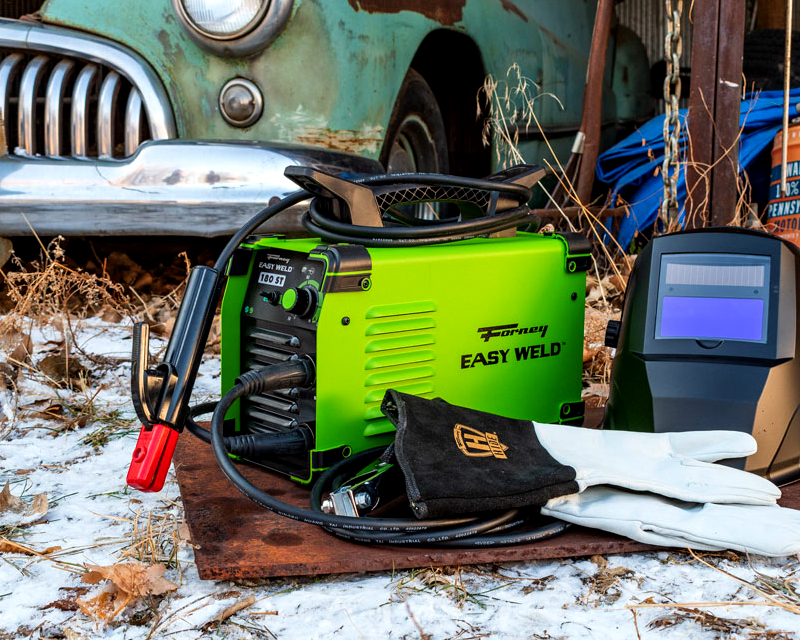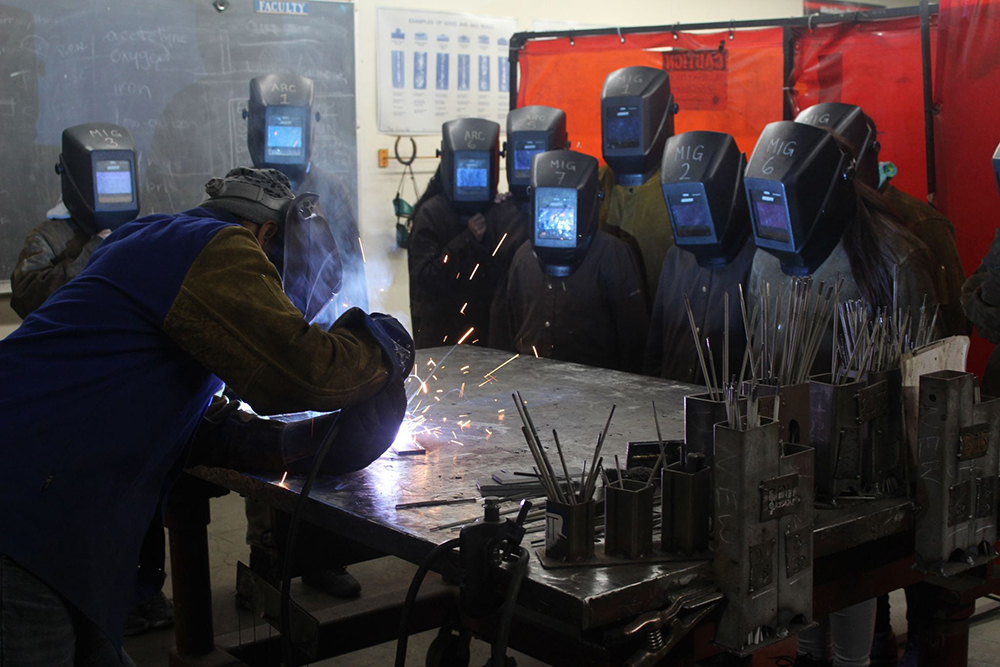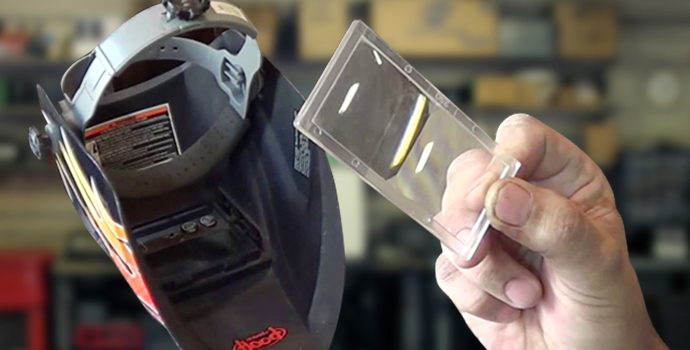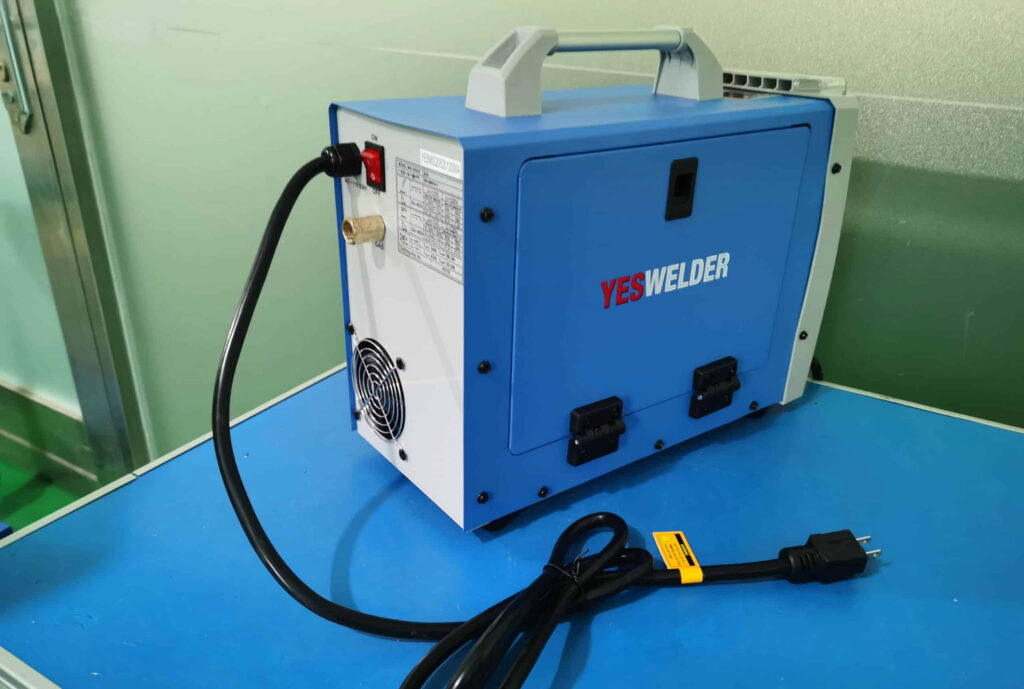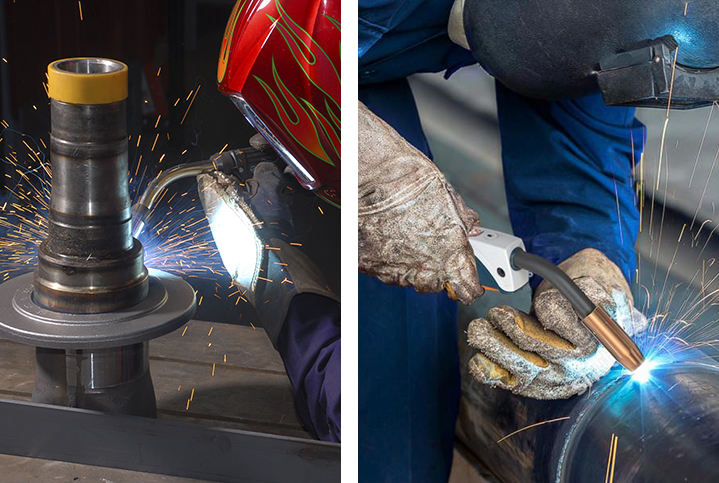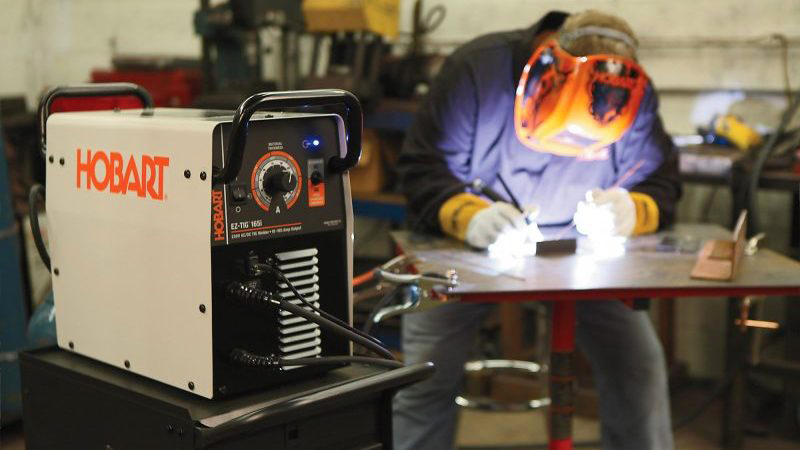

If you’re an aspiring welder and want to take welding as a profession or career, the first thing you need to decide is whether you will work within a union or work on your own and remain union-free. Whichever you choose depends on the type of welding career you want, your experience, working style, and preferences.
Now, if you decide that you want to work within a welding union, the next thing you might wonder is how to join a welding union. There are certain steps to consider when you want to join a welding union, and it also comes with its pros and cons. In this guide, we will explore all you need to know about joining a welding union.
The welding industry has constantly been expanding over time. The Bureau of Labor Statistics Trusted Source Welders, Cutters, Solderers, and Brazers | U.S. Bureau of Labor Statistics Welders, cutters, solderers, and brazers use hand-held or remotely controlled equipment to join, repair, or cut metal parts and products. www.bls.gov predicted an 8% growth in welding jobs over the next ten years. As there’s more and more competition in welding jobs, one has to ensure that one is prepared for the strict requirements that come with joining a union.
Before joining a welding union, you have to follow due process and do your research widely so that you can excel in your career. Not every aspiring welder can join a union randomly, so you have to ensure that you meet the union’s requirements.
Start by obtaining a welder’s certificate from the American Welding Society. Many states in the United States have testing facilities to visit to acquire the certificate, but you can also apply for it online. You would have to enroll in the AWS training class and prepare for the exam through exam guides and whitepapers. Once you are sure that you’re ready, you can go through the exam, and if you pass, you can receive the certificate.
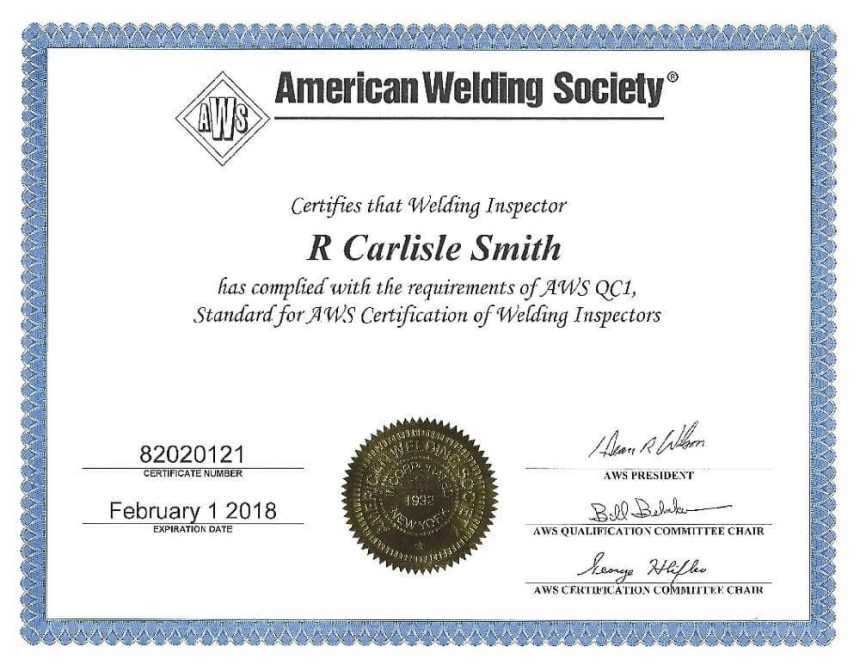
The next thing to do is look for a proper welder’s union that is preferably in your area. There are different types of welding unions with varying kinds of benefits, demands, and requirements. You need to filter through all of them and find the one that works best for you. You can simply search for a ‘local welding union near me’ and check them out. It’s advisable also to check their requirements and the membership fee that you have to pay. You can either join an ironworker, pipefitters, or boilermaker’s union.
Then, you need to submit an application to the welder’s union of your choice and pay the membership fee. You can make things easier for yourself by contacting the local representative of the union and asking for help with the paperwork. If you meet their requirements, then you will be added to the union as a member. From there, you have to follow the rules given by the welder’s union and do your work as a welder.
To be accepted in a welder’s union, you need to meet specific requirements, which we will explore next in this guide.
When looking at how to join a welding union, one needs to consider the requirements that you have to meet. One needs to be a well-trained welder to be accepted in any welder’s union and have the needed certificates. The requirements for a welder’s union are higher than what you would need to have if you were planning on being union-less. You would have to be prepared because unions only want to have the best welders, and there’s a lot of competition in this industry.
For one, you need to be skilled in using all the latest welding machines and tools out there like multi-process welders, or no union would take you seriously. It’s best to practice using machines starting with the MIG welder because they are easy to use. You can move up to other advanced machines like the Weldpro Digital TIG welder. Then, it would help if you memorized all the welding safety protocols out there so that you won’t make any mistakes in the future.
Welders must also pay attention to detail, regardless of how small it is. This would be helpful when you get a welding job. You also need to have proper communication and teamwork because this would help when you carry out jobs with other members of the welding union. You must know about building, measurements, planning, design, and other related concepts. Once you can meet this bare minimum, you have a shot at joining a union, but you need to keep on learning so that you remain in the union for a long time.
Although these requirements might seem a bit overwhelming for an aspiring welder who is still finding their feet in this profession, with training, you can get the advantage that you need to succeed in any union. You can learn more by joining a trade school for welders and the studies for AWS exams.
These schools provide practical and theoretical training, which includes welding practices, equipment handling, work ethics, safety precautions, metal preparation, welding symbols, and more. They also offer hands-on welding experience, starting with easy-to-use MIG welders like the popular YESWELDER digital model, and moving higher to advanced multifunctional machines. The courses usually last for up to six months and would help you prepare for the AWS certification exam too. Although joining a trade school is not compulsory, you can get a great experience that would be indispensable once you start working in the field.
There are three main kinds of welding unions, which we have mentioned before. They include pipefitters, boilermakers, and ironworkers. You can choose one of these three based on what works best for you as a welder and the field that you want to specialize in.
It’s essential to think deeply before choosing any welding union because once you join, you would have to do that particular work until your contract expires. It’s not very easy to switch from one type to another.
There are other sub-classes asides from the three main kinds of welding unions, and ensure that your capability influences your decision.
The different kinds of welding unions include:
Boilermakers. These work in heavy-duty construction and manufacturing. They work with heavy-duty metal structures that are exposed to high temperatures and are usually hired by those in shipbuilding, railroads forging, and other related industries.
Ironworkers. These welders work with all the structural and construction aspects of welding. They usually work at construction sites in building bridges, commercial residences, stadiums, landmarks, vehicles, and more.
Pipefitters. These welders are focused on plumbing and welding pipes, whether they are industry-level or household pipes.
The duties of a union welder differ based on the type of union that you are under. You have different specifications that you have to meet, responsibilities, and apprenticeship requirements.
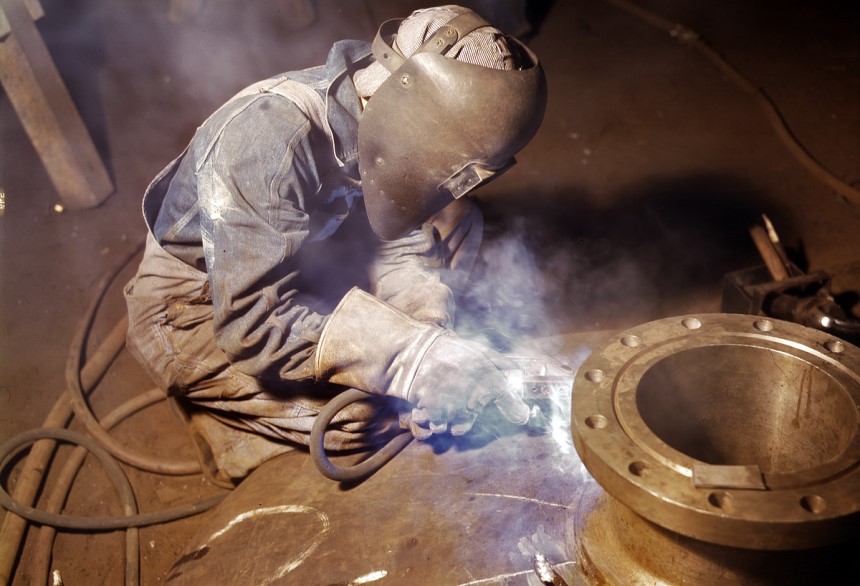
As the name implies, boilermakers usually work with boilers and are hired to make and maintain them. These boilers can be powered by gas or fluids and are usually heated up to provide heat, power, or mechanical energy. The energy is then used to run different systems like vehicles, ships, and machines. Boilermakers are also required in extracting and transferring oil and gas and generating power for different machines.
Boilermakers need to have steady hands and patience for them to carry out their jobs ideally. They also need high technical skills and should be able to endure high altitudes, extreme heat or cold, because of the different jobs that they can be called to do.
Their responsibilities include:
They can be hired in shipbuilding, oil and gas, vehicle manufacturing, power plants, oil transmission, liquid and gas flow, fuel extraction, and machinery sectors.
Before starting in a boilermaker union, it’s best to go through an apprenticeship and gain as much experience as you can. You need to go through four years of apprenticeship in welding and boiler making before you can be accepted as a union member anywhere.
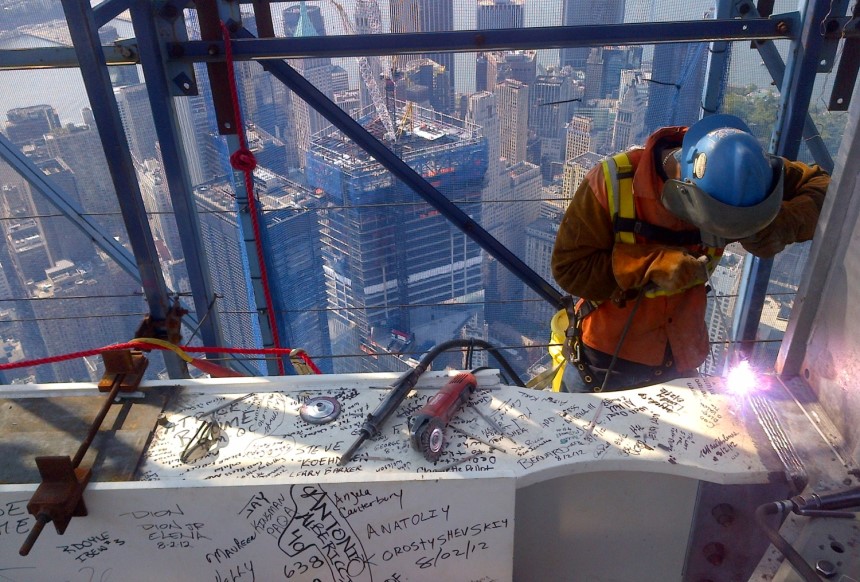
Ironworkers work in a challenging field and can be hired to deal with public and private structures. They usually need to work on high elevations like installing steel beams, placing supports on large buildings, constructing bridges, and more. Since you would be working from a high altitude, your senses need to be sharp; you need good balance and alertness.
Ironworkers usually work with the entire construction team, so communication skills are a must. The deadlines are also crucial since most jobs are commercial projects, so you need to work efficiently. Ironworkers deal with machines more than they do with tools, so nimbleness is also important. They work with flux core machines and other kinds of welding machines.
The responsibilities of Ironworkers include:
Ironworkers can be found in different job sectors like manufacturing, reinforcing, demolition, structural and ornamental industries.
A journeyman ironworker has to complete between three and four years of apprenticeship before they can be considered for a welder’s union. The apprenticeship period would involve learning how to measure, bend, cut, construct and handle all kinds of metals. One also has to learn mathematics, measurements, blueprint reading, safety protocols, and construction techniques.
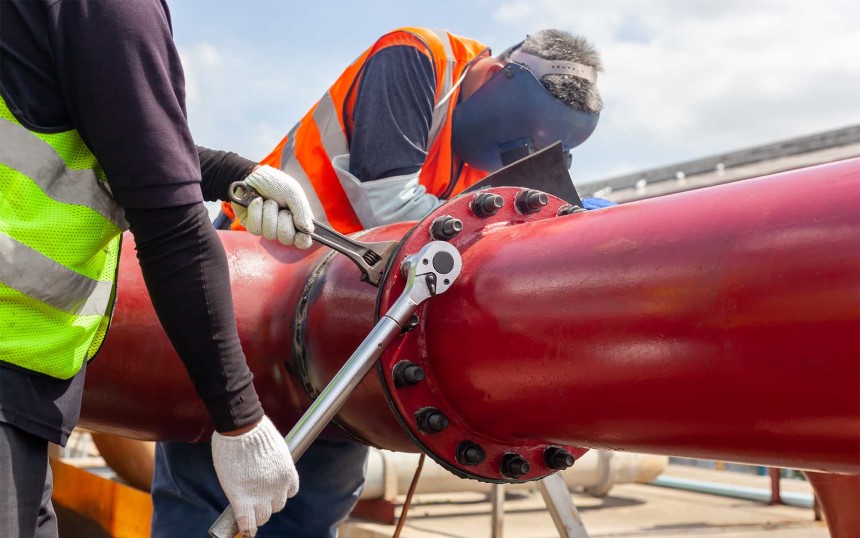
Whether it’s for water transit or gas supply, there are different scenarios that pipes are being used. Pipes are also used in cooling and heating systems, hydraulics, ventilation, steam transmission, and chemical flow. Those who deal with these pipes are the pipefitters, and they focus on cutting, making, fitting, and connecting pipes in any transit system.
Pipefitters can also be hired to design layouts for hot water systems, low-pressure and high-pressure steam, oil and fuel transit, pipelines, and refrigeration systems. Pipefitters can work in open spaces or enclosed spaces, and even in extreme weather conditions, so you must be comfortable in all spaces. They must also know a lot about residential and commercial pipe installations.
If you join a pipefitter union, you will work in planning and installation. You would also work with different grinding, welding, leveling tools, and welding machines like 120v models and the like. Some of the responsibilities of pipefitters include:
Pipefitters work in different sectors, including heating, refrigeration, metal fabrication, utility, cooling, papermill, vehicle manufacture, and oil refinement industries. They usually go through four to five years of apprenticeship where they obtain knowledge on the job and in the classroom. The classroom sessions involve topics like mathematics, physics, and chemistry.
If you look through any welding forum or join a discussion with different welders, there’s a good chance that the argument of union vs. non-union welding would come up. While some welders would say that it’s better to work on your own, others would argue that there are a lot of benefits to enjoy when you work in a union.
It’s important to know that each person’s experience is different, so just because you know welders that work well on their own doesn’t mean that you would work well on your own too. On the other hand, just because welding unions work well for many professionals doesn’t mean it’s ideal for you.
Your interaction with a welder differs based on your experience, geographical location, and work availability in the US city.
One main difference between union and non-union welding is how much they earn. Union welders usually make more than non-union welders because they have connections with the government and other business organizations. They are also known for being very reliable because they have a wide range of welders at their disposal. So regardless of the job that they want to do, they have a welder for that particular job. So, most people hire union welders than non-union welders.
Another difference is the rules and regulations involved in working as a union or non-union welder. Union welders have to pay membership fees and follow the rules provided by the union. Unlike non-union welders that can choose whatever job they want to take, union welders might end up working on projects that they aren’t interested in.
Although working as a non-union welder gives you a lot of independence, it would be hard to charge high fees on your projects, except you are experienced and have a steady client base.
Like any other career, some pros and cons come with joining a welding union. A welding union would give you a lot of benefits, but at the same time, you have to look out for a few downsides. On the upside, the pros are more than the cons.
The advantages of joining a welding union include:
As mentioned earlier, members of welding unions earn more than those who work on their own. Unions owe their success to the contacts and connections that they have made with companies and the government. They usually charge a high fee for their services, which clients always agree on because they know that the union has a large roster of welders to meet their needs.
Welding unions show a lot of focus on ensuring that their members are working in a safe place to reduce the risk of workplace injuries. They do so by putting a lot of pressure on the clients to make sure that all the needed safety protocols are put in place. Whenever there is a workplace injury, unions are held accountable and offer insurance to their members.
Unlike non-union welders, union welders can enjoy the job security provided by their company. Asides from higher pays and insurance, they offer healthcare benefits, retirement funds, and other benefits. Welding unions usually fight for workers and typically act as a middle man between welders and clients whenever there is a dispute. Union welders can also fight against dismissal from a project if it’s unfair.
However, there are some downsides of being a union welder:
When you join a welder’s union, there is no freedom or independence. You would be limited to the rules that the union sets, and you might have to pay fees as a member. Also, everyone in a welding union is paid the same, so if you’re working more than your colleagues, you would still get paid the same salary. But non-union welders get to keep all the profit for themselves.
Also, there is the only type of job that you get when you work at a welder’s union. Since there are different types of welder’s unions and you can only join one, you would only be able to do jobs related to that field. For example, if you join an ironworker’s union, you only get jobs in this discipline. But as a non-union welder, you can do any jobs you want.
Welding unions take seniority seriously, and although it doesn’t seem like there’s anything wrong with it, it places a hindrance on newer welders in the union. In most cases, the best projects are assigned to the senior welders, while junior welders don’t have many opportunities to show their expertise.
| Pros | Cons |
| Union welders get more pay on their projects | There is no independence in working as a union welder |
| Union welders are protected against workplace injuries and are provided insurance | All jobs provided by a welding union are limited to one discipline |
| Union welders enjoy job security, healthcare benefits, and retirement fund | Newbies in welding unions don’t get a lot of chances to showcase their expertise |
Before deciding whether you want to join a union or not, you’re probably wondering how much money do union welders make. According to data from Comparably Trusted Source Union Welder Salary | Comparably The average annual salary for Union Welders in the US is $69,190. See how your salary compares to other Union Welders with Comparably. www.comparably.com , union welders in the United States earn between $13,190 and $356,999 yearly, depending on different factors. But the median salary is $64,168. They also have to pay a federal tax of 22% on their pay.
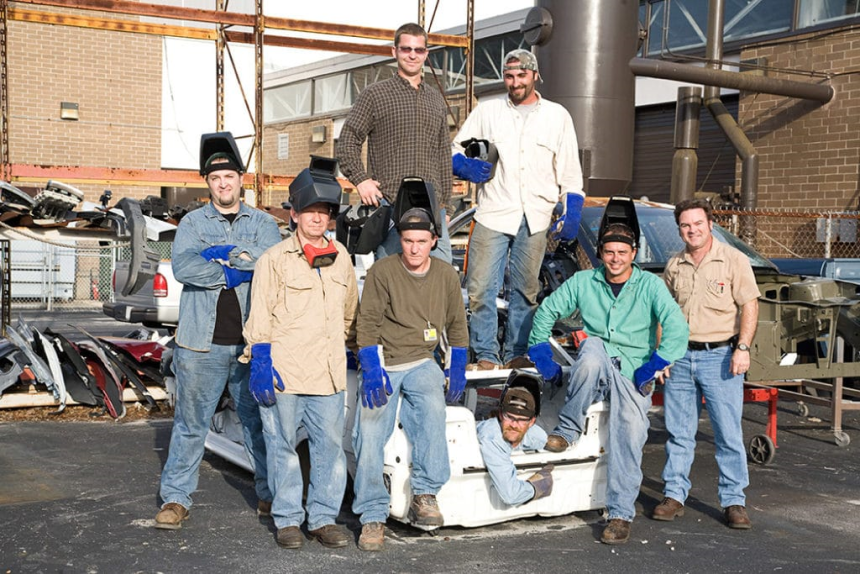
A welder journeyman is a title given when you pass certain levels as a welder. To become a journeyman welder, you must complete the apprenticeship and pass the necessary state licensing requirements. The apprenticeship can last up to four years, but it would be shorter if you have a degree or vocational certificate.
If you’ve given it much thought, you can join a welding union today after making the necessary preparations. Although there’s a lot to do for you to join a union, keep in mind that there’s also a lot to benefit from.
Now that you know how to join a welding union, you can start by doing the necessary research to find the one that would you would work best in. Also, make sure you are well-trained in all aspects, from the right school learning and certifications to meeting state requirements.
Once you join a welding union, you can start building your career and enjoy the benefits offered by the organization.
